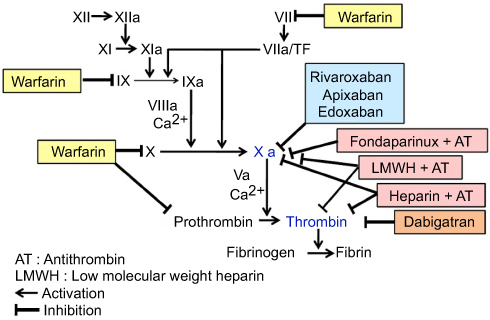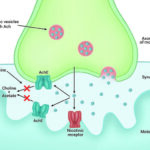Dabigatran etexilate is a direct thrombin inhibitor widely used for stroke prevention in non-valvular atrial fibrillation and treatment of venous thromboembolism. While its predictable pharmacokinetics allow fixed dosing without routine monitoring, the associated bleeding risk, particularly in emergencies or urgent surgical situations, necessitates prompt reversal strategies.

Clinical Scenarios Requiring Dabigatran Reversal
Reversal of dabigatran-induced anticoagulation is critical in the following scenarios:
- Life-threatening or uncontrolled bleeding
- Urgent surgical or invasive procedures
- Traumatic injury with significant hemorrhage
- Acute renal impairment with elevated dabigatran levels
- Overdose or accidental ingestion
Prompt recognition and intervention improve patient outcomes and reduce the risk of thrombotic or hemorrhagic complications.
Idarucizumab: Specific Reversal Agent for Dabigatran
Idarucizumab is a humanized monoclonal antibody fragment (Fab) developed specifically to reverse the anticoagulant effects of dabigatran. It binds dabigatran with an affinity 350 times greater than thrombin, neutralizing both free and thrombin-bound drug molecules.
Pharmacological Properties of Idarucizumab
- Structure: Monoclonal antibody fragment (Fab)
- Onset of action: Immediate (within minutes)
- Half-life: ~45 minutes
- Elimination: Primarily renal
- Effect duration: Sustained reversal for up to 24 hours
Idarucizumab does not possess procoagulant activity and does not reverse other anticoagulants.
Dosing and Administration Guidelines
| Indication | Recommended Dose | Route |
|---|---|---|
| Dabigatran reversal (standard) | 5 g total dose (2 × 2.5 g) | Intravenous (IV) |
| Administration protocol | Two consecutive IV infusions | Over 5–10 minutes |
No dose adjustment is necessary for elderly patients or those with hepatic impairment. Repeat dosing is rarely required but may be considered if clinically indicated due to rebound dabigatran levels.
Laboratory Monitoring Post-Reversal
Though idarucizumab leads to immediate clinical reversal, laboratory confirmation may include:
- aPTT (activated partial thromboplastin time)
- TT (thrombin time)
- ECT (ecarin clotting time)
Normalization of these parameters typically occurs within minutes post-infusion.
Safety Profile and Contraindications
Idarucizumab is well-tolerated with a low incidence of adverse events. Observed side effects may include:
- Hypokalemia
- Delirium
- Constipation
- Fever
- Pneumonia
Contraindications:
- Known hypersensitivity to idarucizumab or its components
No prothrombotic effects have been demonstrated, but patients should be monitored for thrombotic events due to reversal of anticoagulation.
Management of Dabigatran in Emergency Surgery
In cases requiring urgent surgical intervention, idarucizumab ensures rapid reversal, permitting safe procedural access. Timing of surgery can proceed immediately following the second 2.5 g infusion. Surgeons should coordinate closely with hematology to ensure appropriate intraoperative monitoring.
Resumption of Anticoagulation Therapy
Following reversal and hemostasis, patients at ongoing risk of thromboembolism should resume anticoagulation once clinically stable. Dabigatran or alternative anticoagulants may be restarted after 24 hours, provided bleeding is controlled and renal function is appropriate.
Alternative Reversal Strategies (If Idarucizumab Is Unavailable)
In settings where idarucizumab is not available:
- Activated charcoal (if ingestion occurred within 2 hours)
- Hemodialysis (removes ~60% of dabigatran over 2–3 hours)
- Prothrombin complex concentrates (PCCs) – limited evidence for dabigatran reversal
- Tranexamic acid or antifibrinolytics as supportive measures
These options are considered second-line and less effective than idarucizumab.
Dabigatran Reversal in Special Populations
Patients with Renal Impairment
- Prolonged elimination of dabigatran increases bleeding risk
- Idarucizumab still effective; however, re-elevation of plasma levels may occur
Geriatric Patients
- No dose adjustment required
- Increased monitoring advised due to age-related renal decline
Pediatric Use
- Limited data; case-by-case evaluation and specialist consultation required
Frequently Asked Questions:
How fast does idarucizumab reverse dabigatran?
Reversal is immediate, typically within minutes of administration.
Is the effect of reversal permanent?
Yes, for most patients. Rare cases may require redosing if dabigatran levels rebound.
Can other NOACs be reversed with idarucizumab?
No. Idarucizumab is specific to dabigatran.
Can patients receive dabigatran again after reversal?
Yes, once the bleeding risk is resolved and hemostasis is restored.
Is laboratory testing required before using idarucizumab?
Not mandatory in emergencies; clinical judgment can guide use.
The reversal of dabigatran-induced anticoagulation is a critical intervention in the management of bleeding emergencies and surgical readiness. Idarucizumab offers a highly effective, rapid, and safe solution, supported by strong clinical data. Appropriate dosing, vigilant monitoring, and timely resumption of anticoagulation are essential components of comprehensive care. When idarucizumab is unavailable, alternative strategies may offer partial efficacy, underscoring the importance of institutional preparedness for anticoagulation emergencies.

